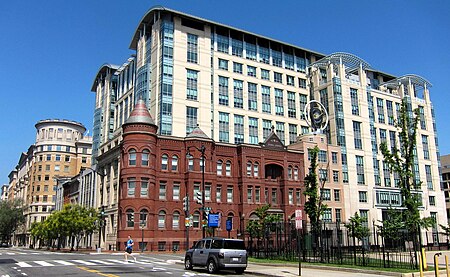Marian Koshland Science Museum
Defunct museums in Washington, D.C.Museums disestablished in 2017Museums established in 2004Penn QuarterScience museums in Washington, D.C. ... and 1 more
United States National Academy of Sciences

LabX is the public engagement testbed at the U.S. National Academy of Sciences (NAS) - currently located in Washington, D.C. From 2004 until 2017, it was known as the Marian Koshland Science Museum. The museum featured exhibits that presented modern science and scientific issues in an accessible way, geared for the general public. It explored current scientific issues that were important for the nation's and world's public policy decisions, as presented in reports by the United States National Academies. The National Academy of Sciences replaced the museum with LabX.
Excerpt from the Wikipedia article Marian Koshland Science Museum (License: CC BY-SA 3.0, Authors, Images).Marian Koshland Science Museum
E Street Northwest, Washington
Geographical coordinates (GPS) Address Phone number Website External links Nearby Places Show on map
Geographical coordinates (GPS)
| Latitude | Longitude |
|---|---|
| N 38.8964 ° | E -77.0195 ° |
Address
Marian Koshland Science Museum
E Street Northwest 525
20004 Washington
District of Columbia, United States
Open on Google Maps








